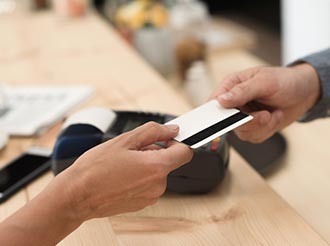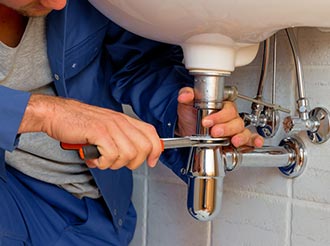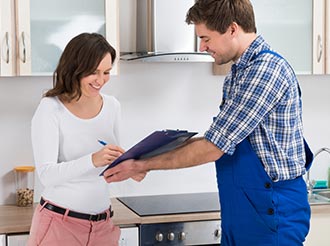
As the crisp autumn air gives way to winter's chill in Arlington Heights, Illinois, we're reminded of the challenges that come with our Midwestern winters. While we may be prepared for snowy commutes and icy sidewalks, there's one winter woe that often catches homeowners off guard: frozen pipes. With temperatures frequently dipping below freezing and occasional polar vortexes pushing the mercury even lower, safeguarding your home's plumbing is non-negotiable.
Our S and J Plumbing crew believes in not just helping homeowners like you with their sewer lines and sump pumps but also empowering them with the information they need to protect their homes from climate challenges. Let's explore how you can keep your pipes flowing freely all winter long; it's much easier than you might think. And, if you have any questions, feel free to reach out to us.
What Can Happen When a Pipe Freezes
Frozen pipes pose a significant risk to your home, far beyond just being an inconvenience. When water freezes inside the pipes, it expands, increasing pressure and often causing the pipe to crack or burst. A burst pipe can flood your home, leading to extensive water damage, mold growth, and costly repairs.
In Arlington Heights, IL, where winter temperatures regularly plunge below freezing, homes are particularly vulnerable to this issue. The danger doesn't end once the ice thaws; sudden water flow through damaged pipes can quickly turn a small crack into a full-blown emergency, leaving homeowners with an overwhelming mess. Prevention is key to avoiding these potentially devastating outcomes.
Prevention Strategies
So, how do you keep your water pipes from freezing when Jack Frost comes knocking? Follow these simple steps:
1. Insulate Exposed Pipes
One of the most effective ways to prevent frozen pipes is to insulate them, especially ones in unheated areas like basements, attics, and crawl spaces. Use foam pipe insulation or heat tape for wrapping pipes. This simple step can make a significant difference in maintaining pipe temperature. When insulating, pay special attention to pipes that have frozen in the past or are in particularly cold areas of your home.
For pipes in extremely cold spaces, consider using thermostatically controlled heat cables. These cables can be wrapped around the pipes and will turn on automatically when the temperature drops below a certain point. Remember to follow the manufacturer's instructions carefully when installing heat cables, as improper installation can be a fire hazard. Additionally, check your insulation regularly, as it can degrade over time, especially in damp conditions.
2. Keep a Cold Water Drip
On particularly frigid nights, letting your faucets drip slightly can prevent freezing. Moving water is much less likely to freeze than still water, so even a slow, steady drip can be enough to mitigate the risk. Additionally, a cold drip of drain water helps relieve pressure inside the pipes should ice start to form. When ice begins to accumulate within a pipe, it creates pressure between the frozen blockage and the faucet. This pressure often leads to the pipe bursting, causing significant water damage. By leaving faucets open just enough to let water trickle out, you reduce the chances of this occurring.
If you're concerned about wasting water, collect the dripping water and use it for plants or other household tasks. While this strategy does use some water, it's far less than what you'd lose if a pipe were to burst.
3. Seal Off Drafts
Drafts are a sneaky cause of frozen pipes, as cold air can find its way into your home through even the smallest gaps. Whether it’s a crack around a window, a gap beneath a door, or an opening around your electrical outlets, cold air entering your home can dramatically lower the temperature around your pipes. This makes water pipes, particularly those running along exterior walls, more vulnerable to freezing. Sealing off these drafts is essential to keeping the cold out and your pipes warm.
Using caulk or weather stripping to block off these small gaps is a simple and affordable way to avoid the pitfalls of a frozen pipe. For homeowners in Arlington Heights, where winter winds can intensify the cold, draft-proofing your home is not only good for your plumbing but also for your energy efficiency.
4. Open Cabinet Doors
On cold nights, open these cabinet doors to allow warm air to circulate around the pipes. This is particularly important for pipes under kitchen and bathroom sinks, which are often located against exterior walls. By opening the cabinet doors, you're allowing the warm air from your home to circulate around the pipes, helping to keep them above freezing temperatures.
If you have young children or pets, be sure to remove any harmful cleaners or chemicals from these cabinets before leaving them open. For added protection, you can place a fan to blow warm air into the cabinets.
5. Invest in a Portable Space Heater
A portable space heater can be a valuable tool in your arsenal against frozen pipes. These devices are particularly useful for heating small, enclosed areas where pipes are at risk of freezing. When selecting a space heater, opt for one with safety features like automatic shut-off and tip-over protection. Place the heater in areas where pipes are most vulnerable, but always maintain a safe distance from flammable materials.
For maximum efficiency, use the space heater in conjunction with proper insulation. Close off the area you're heating to contain the warmth, and consider using a fan to circulate the heated air around the pipes. Remember to never leave a space heater unattended and always follow the manufacturer's safety guidelines.
6. Disconnect Outdoor Hoses and Protect Water Supply Lines
Before the first freeze, disconnect garden hoses and drain outdoor pipes. Use shut-off valves to stop water flow to outdoor faucets. Don't forget about swimming pool supply lines — these should be winterized as well. When you disconnect hoses, make sure to drain them completely and store them in a heated area if possible. For outdoor faucets, consider installing frost-proof spigots, which have a long pipe that extends into the heated area of your home, preventing freezing at the exterior point.
For swimming pools, follow the manufacturer's instructions for winterizing, which typically involves draining water from supply lines and using compressed air to blow out any remaining water. If you have an in-ground sprinkler system, this, too, should be drained and winterized to prevent damage. Consider hiring a professional for this task if you're not comfortable doing it yourself.
7. Know Your Plumbing System
Familiarize yourself with your home's plumbing. Knowing where your main water shut-off valve is located can be crucial if a pipe does freeze or burst. Take some time to trace your home's water supply lines and identify areas that might be particularly vulnerable to freezing. Mark these areas and check them regularly during cold spells. It's also a good idea to know the age and condition of your pipes. Older pipes or those in poor condition are more likely to freeze and burst. If you're not sure about the state of your plumbing, consider having a professional plumber inspect your system.
What to Do If Your Pipes Freeze
If you turn on a faucet and only a trickle comes out, you may have a frozen pipe. Here's what to do:
- Keep the faucet open. As you treat the frozen pipe, water will begin to flow, helping to melt the ice.
- Thaw frozen pipes by applying heat to the frozen section using an electric heating pad, hair dryer, or portable space heater. Never use an open flame device!
- Continue applying heat until full water pressure is restored.
- If you can't locate or thaw the frozen section, call a licensed plumber.
Shield Your Home This Winter — Contact S and J Plumbing Today
Don't wait until freezing temperatures put your home’s plumbing at risk. Our team of experts at S and J Plumbing can assess your home's vulnerability to frozen pipes, recommend tailored solutions, and implement preventive measures to give you peace of mind.
Whether you need help insulating exposed pipes, installing heat tape, or conducting a comprehensive plumbing winterization, we're here to help. Our services don't stop at prevention — if you're facing a frozen or burst pipe emergency, our rapid response team is available 24/7 to minimize damage and restore your plumbing system.




